 |
 |
Review by E.C.McMullen Jr. |
||
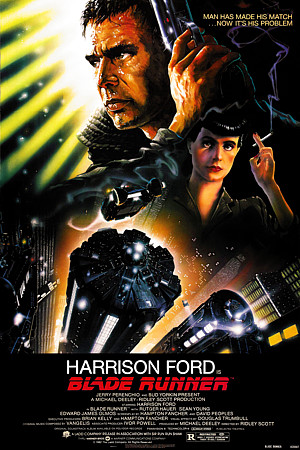
BLADE RUNNER- 1982USA Release: June, 25 1982 Blade Runner Partnership, Sir Run Run Shaw, The Ladd Company, Warner Bros. Rated: USA: R |
||||
Ridley Scott's BLADE RUNNER has such a long and convoluted history, that this is going to be an unusually long movie review.
Why? Because we've reached that moment in history where 1982's BLADE RUNNER is two movies, not one.
Read on.
It must be weird for folks born in the 1990s and later. Let's say you're one of them. You look at movies now and they're good. You enjoy watching them. But someone older, a parent or grandparent, says of your era, "It's okay, but it's nothing like My era."
Now old folks have been saying this for centuries and they've always been wrong.
Dead Wrong!
They've always looked on their childhood through a romantic delusion of what was because when they were young they had a future, whereas most old people can only live in their past, thinking about mistakes they made and what could have been.
But you might have noticed something weird going on lately because, that really is the way it's been for centuries . . . Until the New Millennium.
See, this is where it gets weird.
Why?
Because nearly every time you want to see the latest, hottest looking movie, it turns out that movie is from a 1940s or 1950s or 1960s comic book or a remake of a movie that came out in the late 1960s, 1970s, or the entire decade of the 1980s.
Now believe me, there's some old crusters who will try and snowball you about how great the 1960s were (they weren't).
Oh sure, there were good moments here and there, the staggering fast advancement of space flight for one. That really shows what humanity is capable of with the right incentive. What a lot of people didn't know is that the ten brilliant years of NASA spaceflight in the 1960s was built upon the top secret military testing of the late 1940s and 1950s, and that came out of the guidance of one weapons expert, Dr. Wernher Von Braun - a former NAZI.
Like life itself, history is messy at best, barbaric at worst, and however enlightened we pretend to be now, that isn't built upon a foundation of Sainthood.
Our present didn't just come out of nowhere.
Just so, today's tons upon tons of remakes, reboots, and ongoing sequels of movie franchises that started in the 1960s and went on through the 1980s didn't just come out of nowhere either.
It started with a man who took Science Fiction quite seriously and his name was Arthur C. Clarke. Like all Science Fiction writers of his period, this fiction writer and inventor would have kept on plugging away at his craft (he invented the workable concept of geostationary or Clarke orbit. You like your Internet and cell phones? Thank Clarke. He was far more than a scientist, he was an engineer: He made theories work.), except that he was discovered by a director that the movie business was falling all over themselves to adore and that guy's name was Stanley Kubrick.
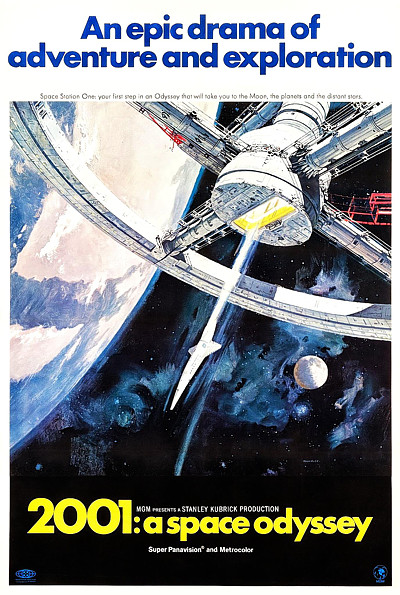
Together over a period of years, Stanley and Arthur formed the clay that would become 2001: A SPACE ODYSSEY.
However - say all of the laudatory things you like about Clarke - and many have; say all the wonderful things you like about Kubrick - and many have; 2001 would have been nothing without the extraordinary special effects and Production Design. The SFX weren't simply models on a string, they looked and moved so damn real. Only one person was capable of pulling off such a feat at that time and his name was Douglas Trumbull.
Here's where we get to the meat of everything that came after.
Once Trumbull made a spaceship, he so wowed the world of filmmaking that they left their old smooth aircraft and von Braun V2 rocket inspired Chesley Bonestell spaceships and the future that artist created, behind.1
Well, almost.
Starting with 1968 and 2001: A SPACE ODYSSEY, every spaceship went from smooth, sleek, and fins to highly detailed. Every interior went from submarine metal and bolts to passenger jet plastic and lights. Moreover, this wasn't simply other SFX artists imitating Trumbull's style, either Douglas himself or his protégés worked on every big budget SF movie that came to matter.
THE ANDROMEDA STRAIN? Douglas Trumbull.
Silent Running? Douglas Trumbull.
What's more, Trumbull discovered and trained John Dykstra and Brian Johnson on Silent Running and 2001. The same John Dykstra who took what he learned from Trumbull's technique and design ethos and used it to create 20th Century Fox's Star Wars (John won an Oscar for that).
The same Brian who created 20th Century Fox's SFX for ALIEN (Brian won a shared Oscar for that).
Douglas didn't work on George Lucas Star Wars as he was too busy working his fantastic on Steven Spielberg's CLOSE ENCOUNTERS OF THE THIRD KIND.
Then he gave Star Trek: The Motion Picture's Starship Enterprise that detailed Trumbull look.
Trumbull, Dykstra, Johnson, and Richard Edlund became the most sought after visual SFX artists. The thing was, they all won Oscars and all got real expensive real fast. Most productions were already spending a fortune just keeping their crew all coked up and pliable, and so needed to hire someone cheaper2 who could give them that Trumbull or Edlund look.
TRIVIA 1 The design idea behind the smooth Starship Enterprise was to put a couple of rockets and a flying saucer together, and make it look aerodynamic. Which is exactly what it looks like. Although Mario Bava did it years earlier with his 1964 movie, PLANET OF THE VAMPIRES. 2 One of those "cheaper people" wound up being a Roger Corman alumni named James Cameron. |
When Director Ridley Scott was pegged to direct ALIEN, he was teamed with Swiss Surrealist Artist, H.R. Giger. Giger was going through his airbrush period and absolutely nobody alive created the fantastic art like Giger.
To separate the utterly alien concepts that Giger designed, Ridley needed someone who could give the earth spaceships that Trumbull look, and he was offered political cartoonist, Ron Cobb (who worked on Star Wars) and French comic book artist, Jean "Mobius" Giraud: all alumni from Alejandro Jodorowsky's failed DUNE project. Ron went over the top with Trumbull and Dykstra's already meticulous space ship designs when he designed the super detailed exterior of Nostromo and other earthcraft. Mobius went detail mad on the clothing including spacesuits.
What all of these people creating fantastically futuristic designs adhered to, however, was that however wild the form, it had to give the appearance of following function. No matter how stylish the designs were, they couldn't look stylistic: existing only for itself.
Because Ridley cut his cinema teeth on the successful ALIEN, he was able to call in the big guns for his next project, BLADE RUNNER, and that's when Scott allowed Douglas to go totally Trumbull.
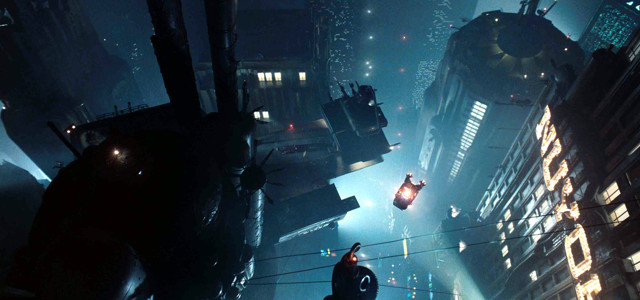
True to form, in 1982 everyone was wowed by the visuals. Artist Syd Meade designed the future and Trumball brought it to life. Book after book after book talks about those amazingly great practical effects and visuals.
I saw the original BLADE RUNNER not once, but three times in first run theaters. Yet in all of those times, I never fully enjoyed it. The movie, in fact, wasn't doing well with audiences despite the generally positive raves of art critics.
Like those who are koo-koo for Kubric, they were all enthusing over the cinematography, the magnificent special effects (over 30 years later and still unmatched by modern cgi as of 2016), the fact that a full color movie was using film noir esthetics.
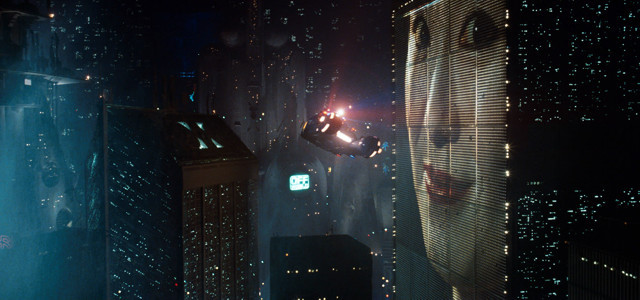
I tried to like it, I sincerely wanted to like it. There was a great story hidden in BLADE RUNNER, I just knew it, I could feel it. But ultimately I couldn't like it because it was such a botched job.
So much repetitive exposition. So much needless narration. So much blah.
Years later I would discover - for the second time in my life - that I wasn't the only one who was grossly disappointed with a critically acclaimed, multi-Oscar nominated movie. There was another - crucial person - who also didn't like the 1982 theatrical release of BLADE RUNNER.
Director Ridley Scott
3 Shriek Girls
PAGE 2 BLADE RUNNER: The Final Cut



This review copyright 2016 E.C.McMullen Jr.

|
| GET COVERED | |
| YOU MIGHT ALSO ENJOY (Sub-Section: THEY LIVE AMONG US!) |
||
 |
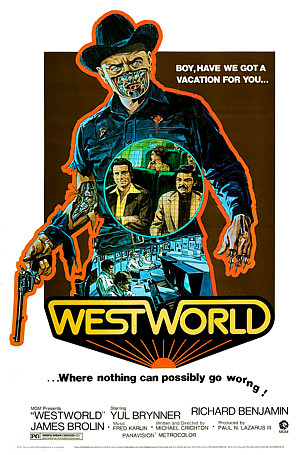 |
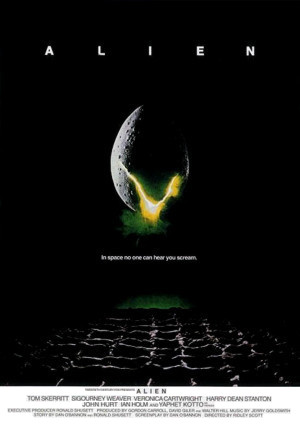 |
| THE MATRIX MOVIE REVIEW |
WESTWORLD MOVIE REVIEW |
ALIEN MOVIE REVIEW |
FEO AMANTE'S HORROR THRILLERCreated by:E.C.McMullen Jr. FOLLOW ME @ |
| Amazon |
| ECMJr |
| Feo Blog |
| IMDb |
| Stage32 |
| Twitter X |
| YouTube |
| Zazzle Shop |

